CompTIA Security+ Certification
Security Architecture
Testing Methods
Welcome back! In this article, we focus on critical aspects of testing resilience and recovery within an organization's security architecture. Ensuring that systems can withstand disruptions and recover quickly requires thorough and regular testing. We will explore various testing methods, including tabletop exercises, failover testing, simulation, and parallel processing.
Testing resilience and recovery involves evaluating and validating disaster recovery plans, business continuity strategies, and overall system robustness. This process not only identifies weaknesses but also improves preparedness and verifies the efficiency of recovery procedures.
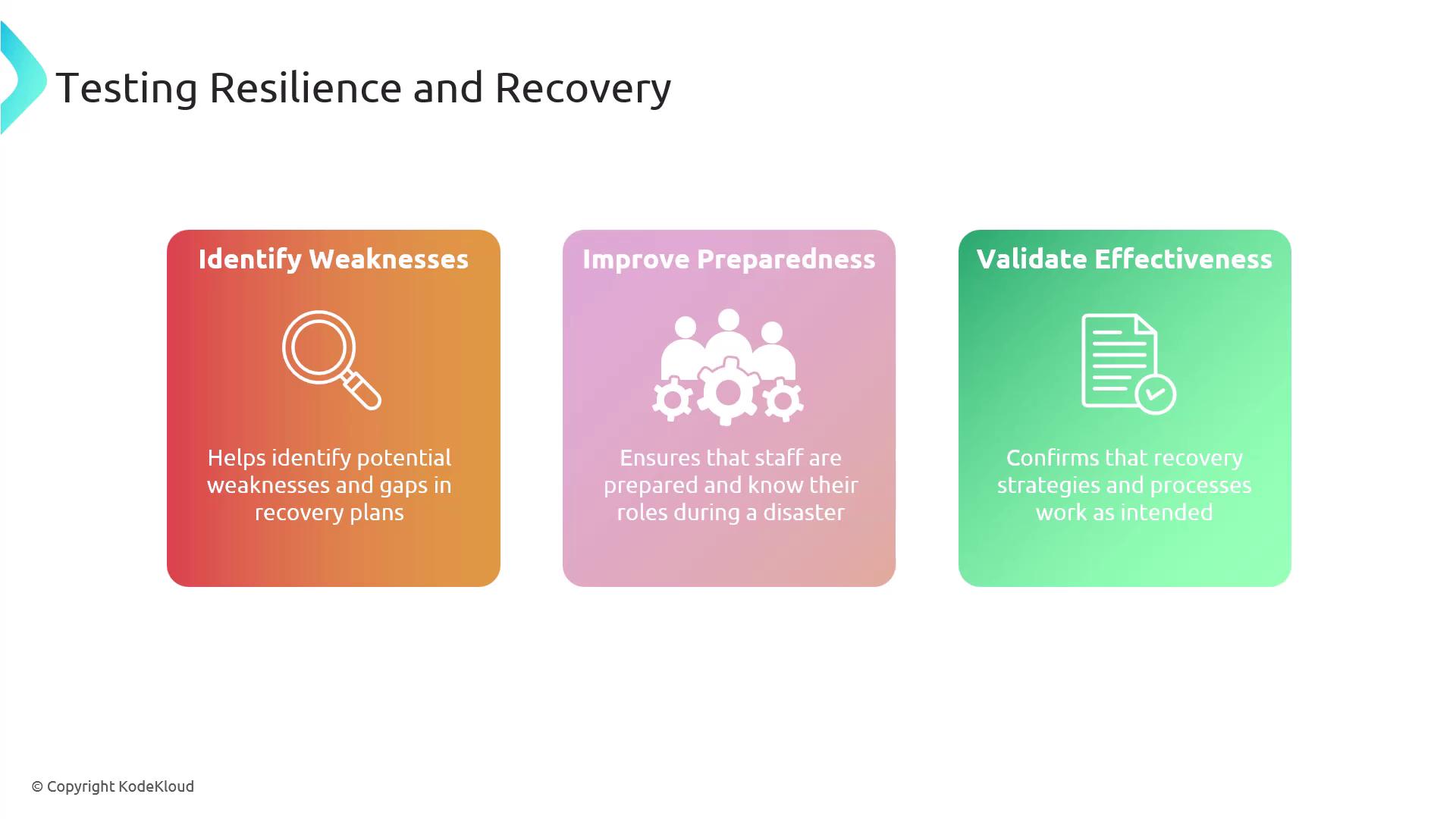
The image above clearly illustrates how testing helps in identifying gaps in recovery plans, ensuring that staff are well-prepared, and confirming that recovery strategies function as intended.
Tabletop Exercises
Tabletop exercises are discussion-based sessions where team members walk through a hypothetical disaster scenario to evaluate their response and decision-making processes. These exercises are excellent for scenario planning, role clarification, and enhancing communication among team members. They ensure that everyone understands their responsibilities and improves overall coordination.
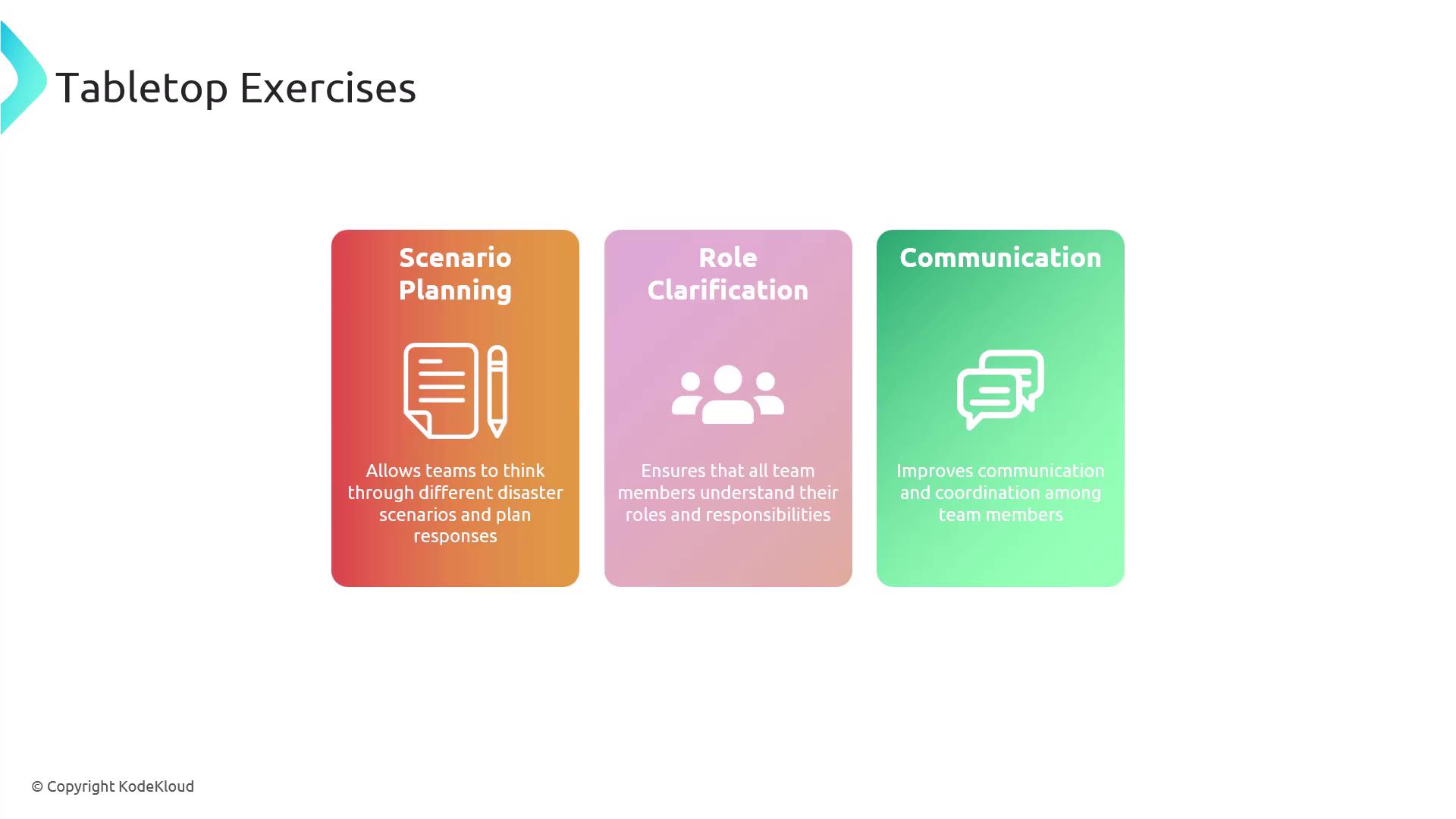
When conducting a tabletop exercise, follow these steps:
- Define realistic disaster scenarios relevant to the organization.
- Gather participants, including key stakeholders.
- Facilitate the discussion by guiding participants through the scenario.
- Document findings, identify gaps, and develop action plans for improvement.
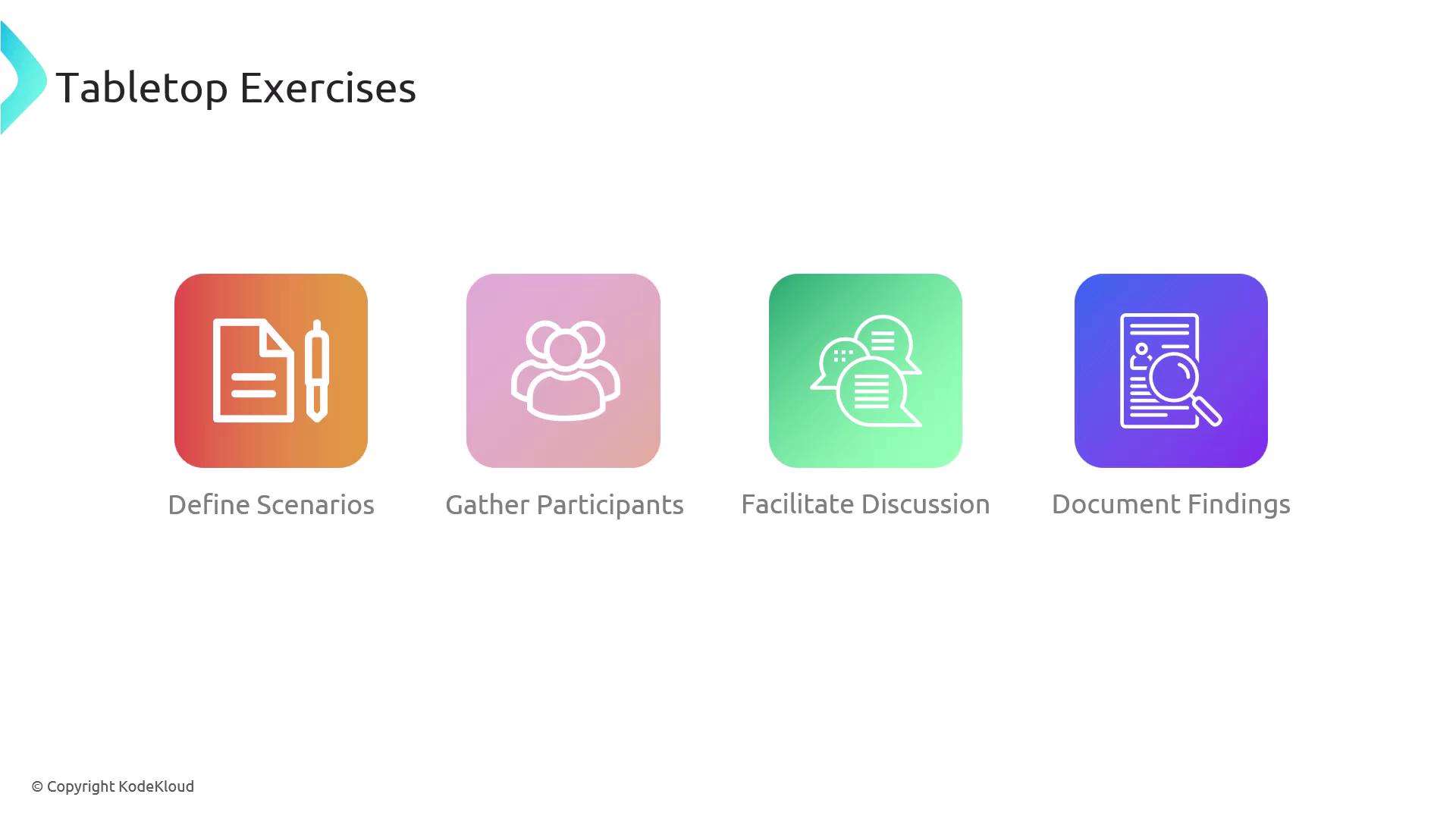
For example, you might simulate a ransomware attack scenario to assess the organization's incident response plan.
Failover Testing
Failover testing involves deliberately causing a failure in a system to ensure that backup systems and processes engage seamlessly. This method is crucial for verifying redundancy, minimizing downtime, and validating recovery procedures.

Steps to implement failover testing include:
- Plan the test by identifying systems and components to be tested.
- Execute a simulated failure in the primary system to trigger failover.
- Monitor and record the process to capture any issues or delays.
- Analyze results to review outcomes, identify problems, and update procedures as necessary.

For instance, a failover test on a database system can verify that a secondary database server takes over seamlessly when the primary server fails.
Simulation Testing
Simulation testing creates a virtual environment that mimics real-world conditions to assess the effectiveness of resilience and recovery strategies. This controlled environment allows for realistic testing without impacting actual operations while evaluating people, processes, and technology holistically.

To implement simulation testing, follow these steps:
- Set up the simulation environment to closely resemble the production setting.
- Define test scenarios within the simulated environment.
- Run simulations while carefully observing and recording responses.
- Evaluate the results to identify vulnerabilities and make improvements.
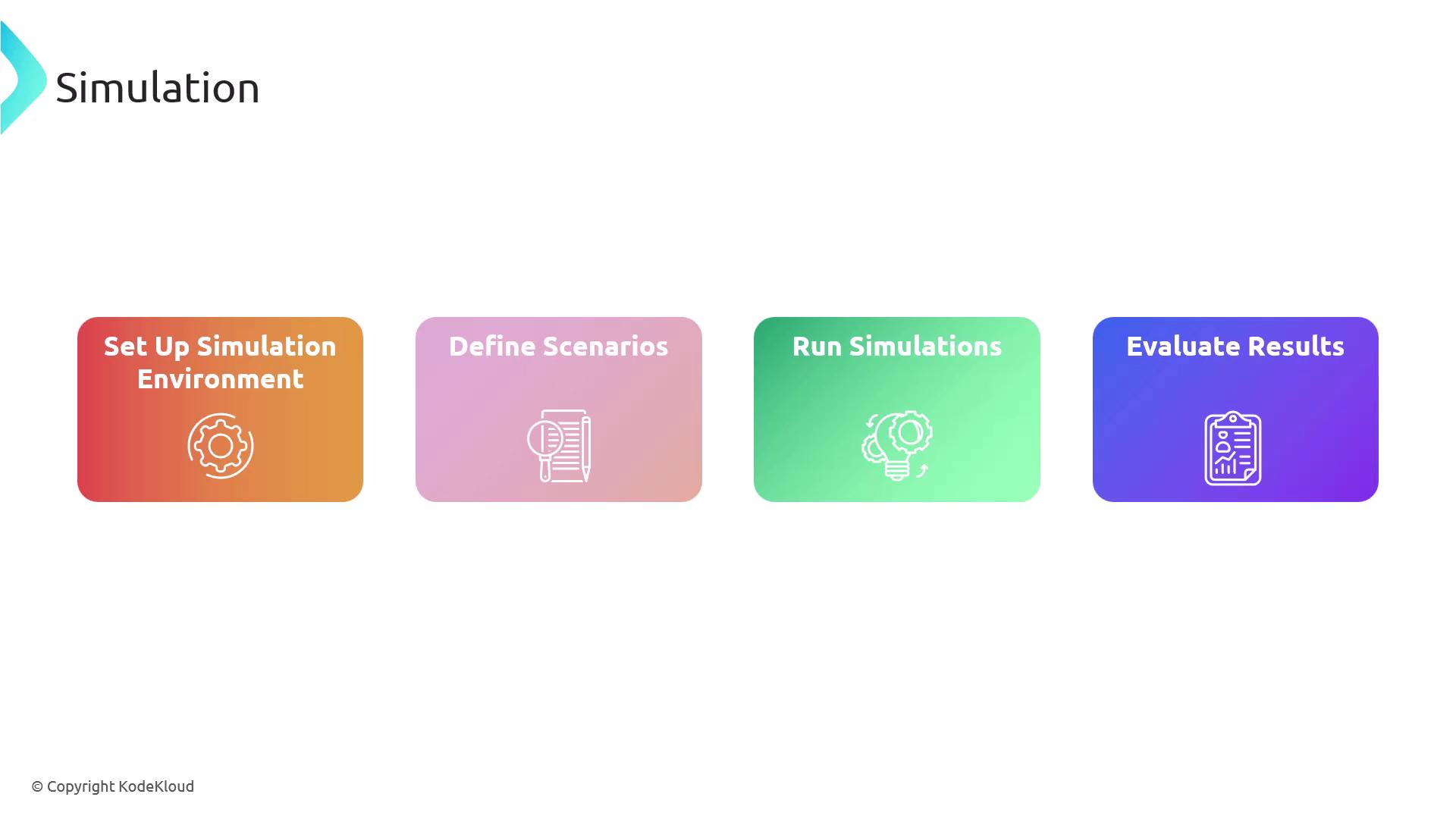
Note
Simulation testing is ideal for organizations that want to validate their resilience strategies without risking live system disruption.
Parallel Processing
Parallel processing involves running the same tasks simultaneously on both primary and backup systems. This method tests the backup system's ability to handle the operational load, ensuring seamless transition and system integrity during failover.
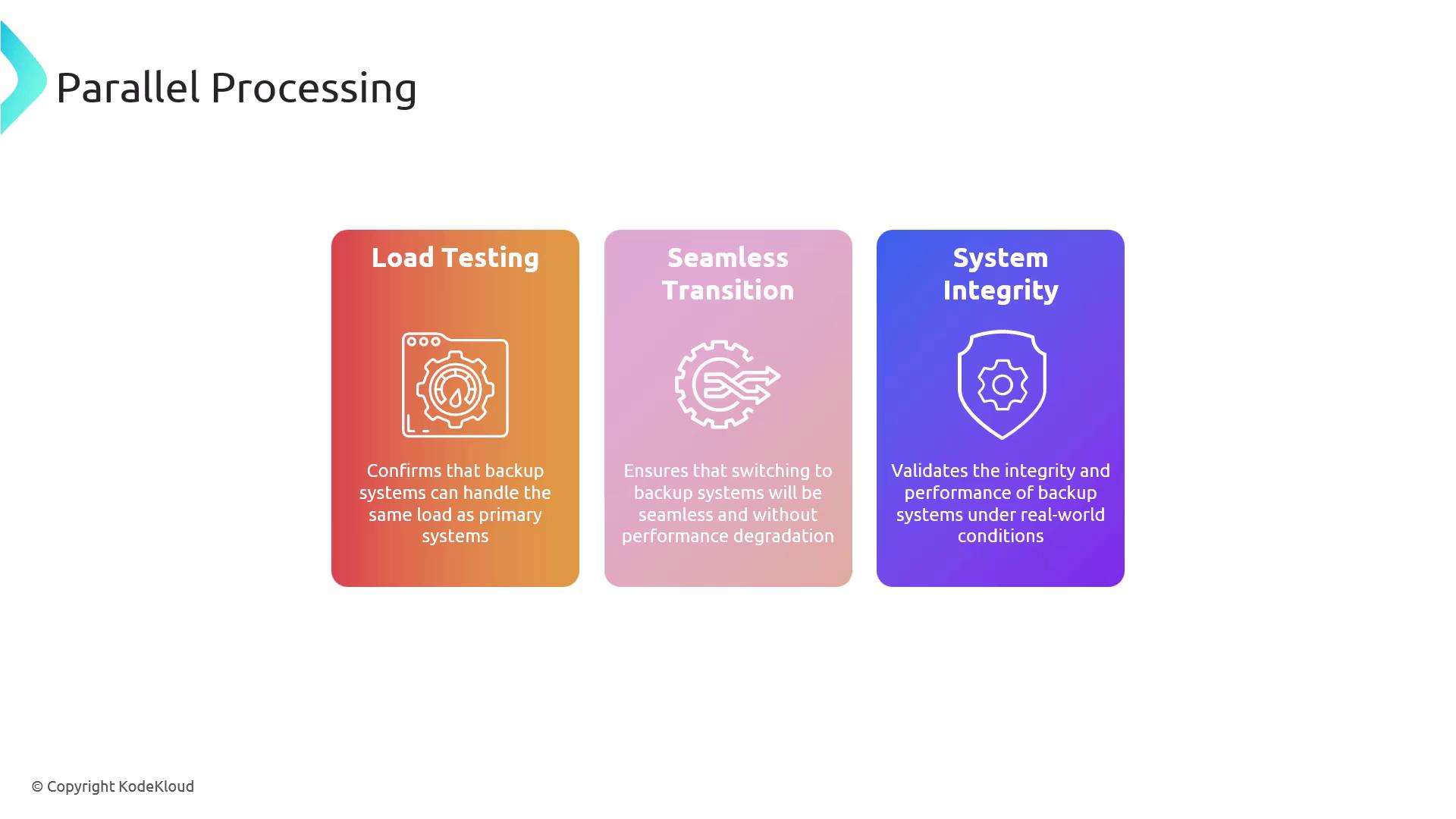
To perform parallel processing tests, proceed with the following steps:
- Identify critical processes that should run in parallel.
- Configure both primary and backup systems to execute these processes simultaneously.
- Monitor the performance of both setups.
- Analyze results to compare performance and identify discrepancies.

Warning
Ensure that testing via parallel processing does not interfere with live operations. Schedule tests during low-traffic periods or in designated testing windows.
Conclusion
Testing resilience and recovery is essential for ensuring that an organization can sustain operations and swiftly recover from disruptions. By incorporating tabletop exercises, failover testing, simulation, and parallel processing, organizations can identify weaknesses, validate procedures, and enhance preparedness.
These testing methods provide valuable insights into the strength of resilience and recovery strategies, supporting business continuity and safeguarding critical assets.
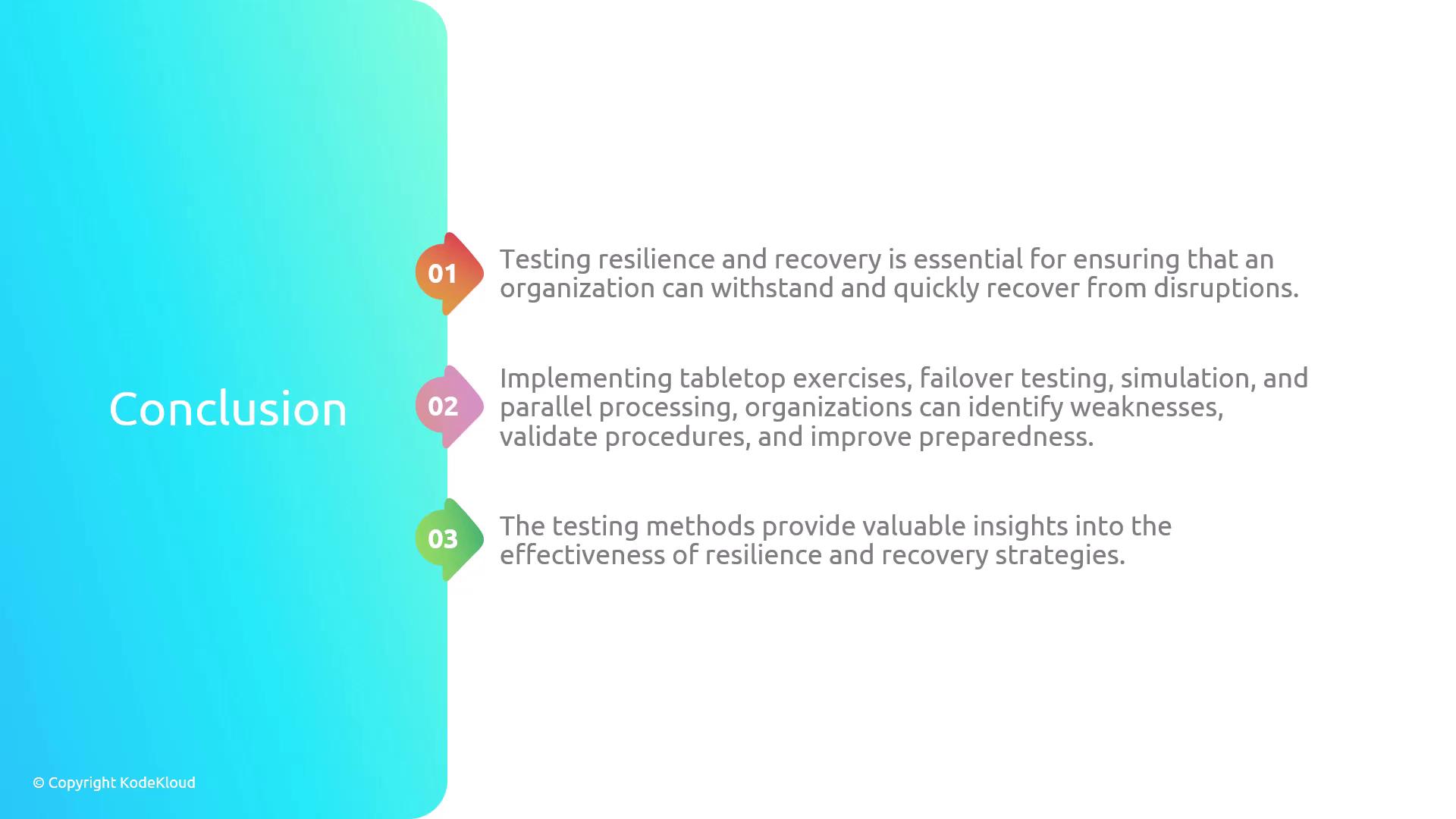
Thank you for reading this article. For further information on developing robust testing strategies and enhancing security architecture, consider exploring additional resources on Kubernetes Documentation and Docker Hub.
Watch Video
Watch video content